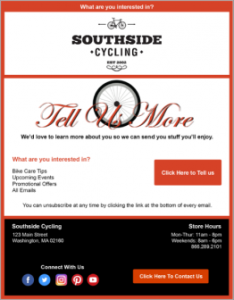
Can your audience find your site?
Anthony, a new business coach, recently spoke to me about internet marketing. Basically he wanted to know how to get his website to rank on Google. I asked, “Have you checked your analytics on your site?” The answer was no. So I suggested a quick review of the website stats to see how his year old site was doing and how we could increase conversions. After finding that the bounce rate was above 79% and the audience demographics were totally not in line with the business goals, the investigation continued as to WHY.
So the next step was to check out some basics on the site itself. What I found completed the darkening picture.
- No meta descriptions on any page
- No keywords on any page
- Not mobile optimized
- Primary landing page of visitors were on the blog. However, blog posting was inconsistent and sporadic.
- Branding that was not consistent with what the business actually did. This resulted in the demographics of visitors being totally off.
Obviously Anthony needed some work done. Most of these items could be taken care of pretty quickly because he already had his researched keywords (they just had not been entered by the website designer) while the blog and branding would take more time.
If you are at the starting line and haven’t even made your list of keywords, here are three free tools that can get you started.
Google AdWords
Google Adwords may not be what you typically think of for keyword research. But marketers can use AdWords to discover keywords for every niche. It’s simple and free to get started:
- Open an Adwords account
- Click on the TOOLs tab
- Click on Keyword planner
Wordstream

With an easy-to-use interface and quick results, marketers can search for related keywords and even email themselves their keyword results for later viewing. Very simple to use. Just browse to their site and enter your keyword into the search box.
SEO Book
SEO book’s free keyword tools delivers suggestions based on global search queries on Google, Bing and Yahoo. Enter your keyword in the search box and you will receive numbers for Monthly Searches, Daily Searches, Google/Bing/Yahoo Searches as well as Cost per Click and Monthly value. You can also use their Keyword List Generator to get a comprehensive list of targeted keywords.
Once you have your keywords list, create your meta descriptions and get them installed on your website. These are two critical elements that enable search engines to find you.
The next problem is his branding does not match the service the business performs. This results in the wrong visitor demographics and ultimately no conversions.
For example, I love adrenaline, flying, speed and Corvettes. If you follow me on social media, you probably picked up on these pretty quickly. However, when you land on my website it’s obvious that we are content marketers and online business managers who work with entrepreneurs. You may find some references to my leisure time fashions within blog posts but it’s not a theme that overtakes the site message. So when you land on the site, there is no doubt what you will find.
What if I had multiple references via pictures and text regarding racing corvettes and flying fighter planes? You may come to my site via one of my daily marketing tips on social media looking for the latest information on webinar software and quickly get confused. Your next click would likely be OFF my page. Make sense?
Your brand is the image that people observe, develop, and relate to. It connects you to your customers and prospects. The branding process, including the planning and decision process are important. These decisions have an impact on your future success.
Remember, your brand is who you are, what you represent, and what makes you and your business unique and different from your competition. Spend time creating your business brand and working through this checklist to ensure a comprehensive and clear brand – a brand your prospects won’t be able to resist.
Digital & Social Articles on Business 2 Community(88)
Report Post





